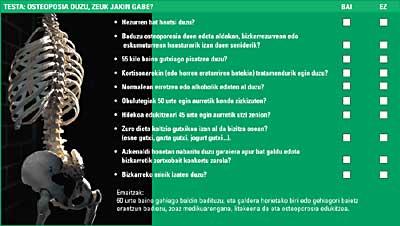Against osteoporosis
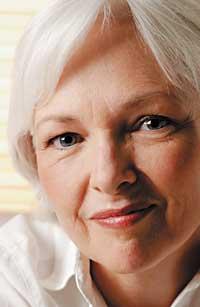
Osteoporosis is a chronic disease, but today, fortunately, it is possible for the disease to stop and amortize, as well as for the bones to regain density with proper medication. Therefore, treatment not only improves bone quality, but also significantly improves the risk of fractures and disability.
According to data from the Spanish Association for the Study of Bones and Mineral Metalism (SEIOMM), 35% of women over 50 years old suffer osteoporosis, a figure that rises to 52% in women of 70 years. Across Spain, two and a half million women suffer from diseases, according to the SEIOMM association.
Why does it happen?
Bones reach maximum density at 30-35 years. From that moment on they begin to lose mass due to the decalcification process. When the body cannot regulate or control bone mineral content, osteoporosis appears and the bones become more fragile.
Women have less bone mass than men (10-25% less). In addition to this physiological difference, the arrival of menopause is a very delicate moment for the bones, since when estrogen decreases bone density. It is estimated that five years after menopause a woman may lose 15% of her bone mass. Hence osteoporosis is much more common in women than in men.
What symptoms do you have and what risks do you have?
Unlike osteoroposis, osteoarthritis or arthritis, it does not produce pain. It is a disease that evolves quietly and is often detected after a bone fracture. In the apparent absence of problems with this fracture, the doctor begins special studies and observes a significant decrease in bone density. Therefore, it is advisable for women who enter menopause to perform a special test called densitometry to know the state of their bones.
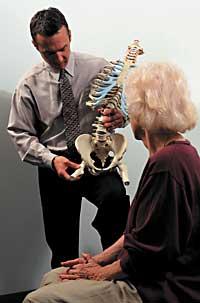
The most common fractures are hip and vertebra fractures, but they can also occur in any other bone in the body. Among us, 33,000 hip fractures occur each year, such as those related to osteoporosis, according to the recent report of the laboratory Novartis. In addition, it must be said that hip fractures are the main international exponent of osteoporosis because they are directly related to the low mineral density of the bone, because their repair costs a lot of money and because these fractures are the ones that generate the most incapacity.
The importance of this point can be seen in the fact that in Spain one in four women over 50 years of age can suffer a bone fracture as a result of osteoporosis; one in three women over 80 years of age will suffer a hip fracture and, together, the risk of hip fracture (without any type of blow or trauma, only for osteoporosis) is 14%.
Treatment: medicines and surgery
It can be treated from the very moment osteoporosis is diagnosed. The goal of treatment is twofold: on the one hand, stop bone loss and, on the other, restore bone as much as possible.
Pharmacies
They reduce bone loss, increasing bone density in the spine and hip. This reduces the risk of breakage by 50%. In this group are bisphosphonates.
On the other hand, in English are called SERMS, selective estrogen receptor molecules. These drugs, the best known is raloxifene, increase the bone mineral density of the whole body, specifically 2%. They are taken by mouth once a day. In any case, it is advisable that this treatment be conducted by a specialist, since it is not without risks, as happens with the treatment of menopause.
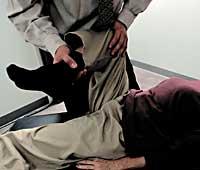
Finally, a hormone called calcitonin reduces and slows down bone destruction. This calcitonin is given by spray through the nose or also by the skin.
Mini-Initiating Surgery
When osteoporosis causes the rupture of a vertebra, the most common treatment is the placement of a corset for months to the patient so that at rest the broken parts of the spine are released. But as these fractures often have a lot of pain, recently a successful surgical technique has been invented, especially with conventional medical treatments in which pain is unsustainable.
A lateral puncture is performed on each side of the broken vertebra and with the help of the radiological control a balloon is introduced that gives the vertebra its previous height. In this so-called ‘new’ space a special cement is injected with the same needle that helps solidify the vertebra without any pressure.
This surgery is performed under general anesthesia and requires one-day hospitalization. Surgery prevents the use of curtains and the need to use painkillers. In most cases (about 90%) the pain is quickly relieved and the deformation of the vertebra is resolved, avoiding kyphosis or the buzzing of the spine.
Osteoporosis prevention
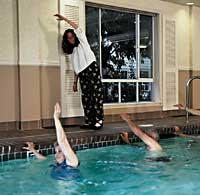
Buletina
Bidali zure helbide elektronikoa eta jaso asteroko buletina zure sarrera-ontzian




